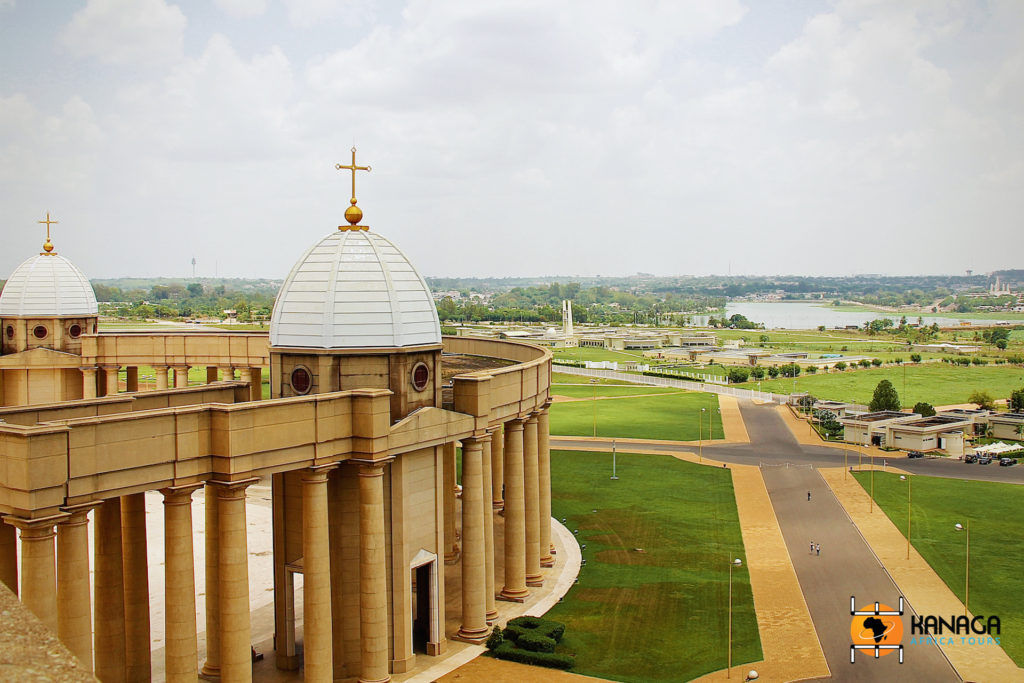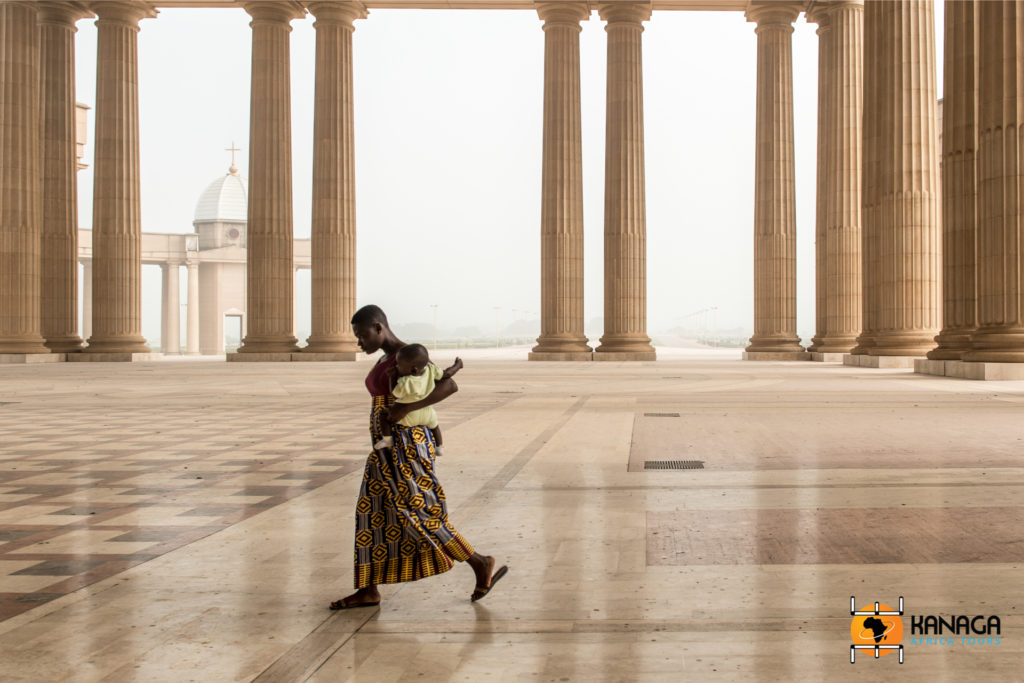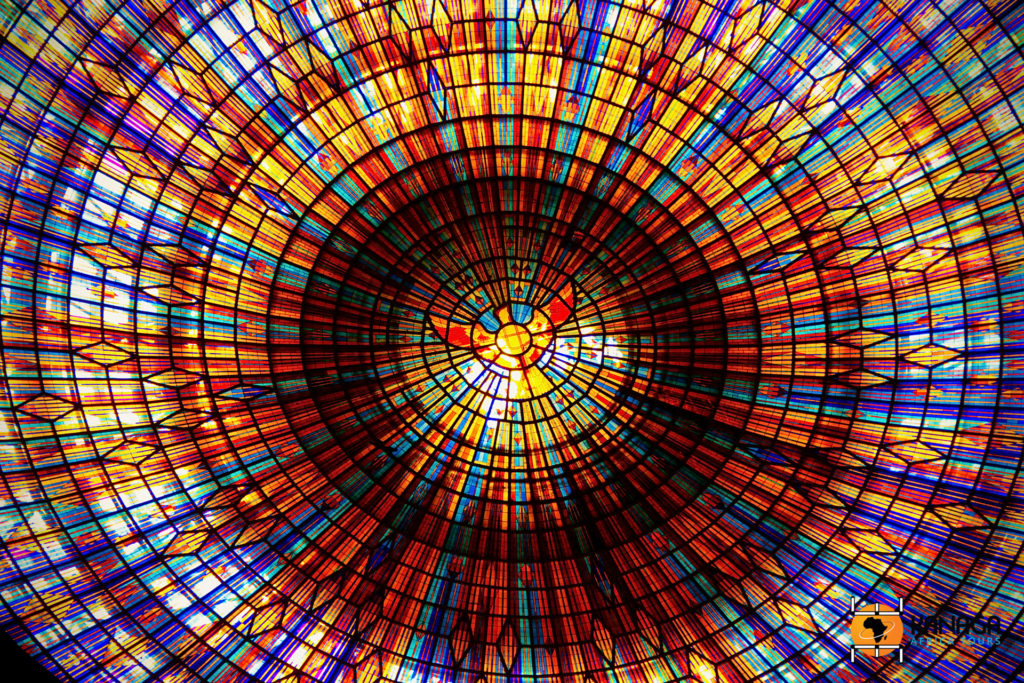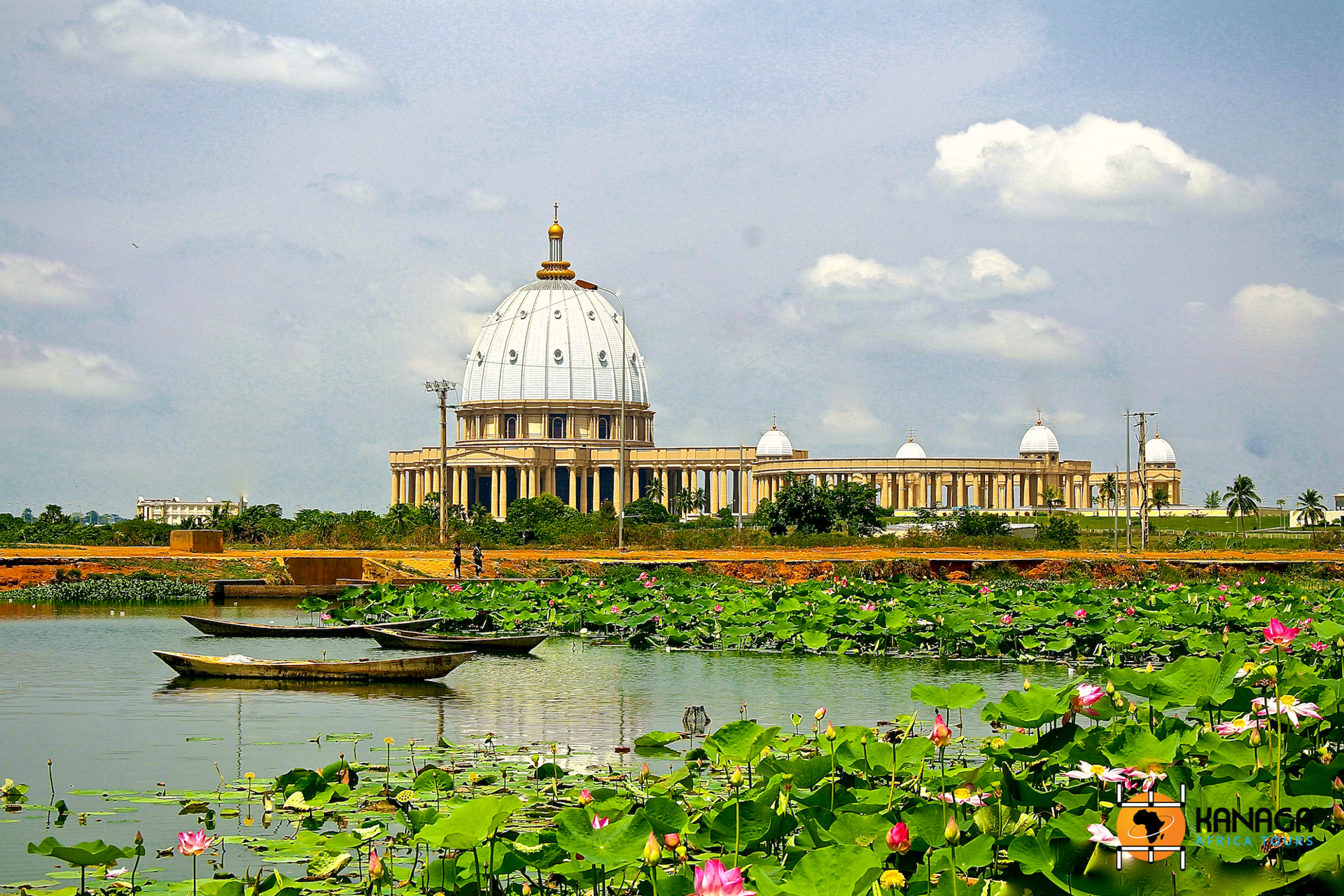© I. Fornasiero
Built between 1985 and 1989 at the behest of then-President Felix Hophouët-Boigny and consecrated in 1990 by Pope John Paul II, the astonishing Notre Dame de la Paix presents itself to the eye as a faithful copy of St Peter’s Basilica in the Vatican.
A majestic piece of architecture that was part of President Hophouët-Boigny’s visionary project to make Yamoussoukro, his hometown, a sumptuous and elegant metropolis, able to rival the most important European capitals in architectural style and size. Therefore, not only wide streets and shady boulevards, a luxurious 14-storey hotel and an artificial lake crowded with caimans defending the Presidential Palace, but also and above all, this grandiose cathedral to complete the work.
For its realisation, it is estimated that architect Pierre Fakhoury used almost 100,000 tonnes of marble, covering a total area of about 30,000 square metres and giving body to 128 columns of 21 metres each. Inside there are 36 mosaic stained glass windows flown in directly from France and Italy, a sumptuous ebony nativity scene and a 13-kilogram gold cross.
Said to be the largest church in the world, in reality, although it is undoubtedly one of the most impressive places of worship in Christendom, taller, longer and wider than its Roman model, it is not the largest. St Peter’s can in fact accommodate almost 60,000 worshippers inside, while Notre Dame de la Paix only 7,000 in the nave and 11,000 in the other areas of the complex.
In any case, it is a work without equal, for the construction of which funds amounting to 300 million dollars have been allocated (it seems that most of them come from the president’s private funds). A disproportionate amount that has aroused perplexity and not a few polemics among Ivorian and international public opinion, which has long questioned the appropriateness of allocating such a huge sum to the building of a place of worship, instead of providing a solution to more stinging problems for a country that is still developing.







